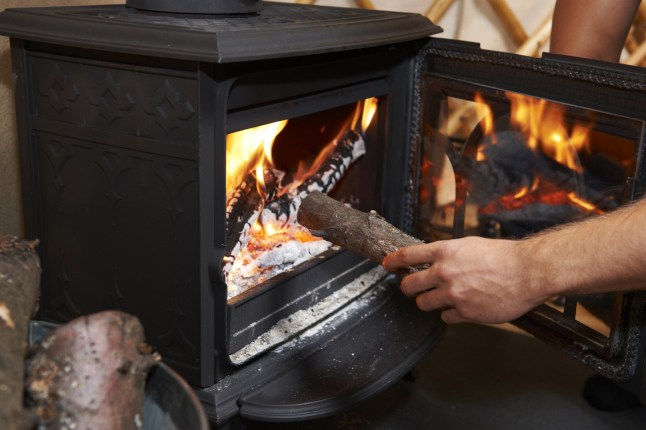
The biggest source of the most dangerous type of air pollution in the UK comes from wood burning stoves, new research has revealed.
Particle pollution, called PM2.5, is widely seen as the air pollutant that has the biggest impact on human health.
Regularly breathing in PM2.5 can lead to respiratory and heart conditions and is particularly dangerous for children growing up exposed to it.
A new report from the Institute of Fiscal Studies warned that 29% of PM2.5 emissions in the UK came from domestic burning of wood and other fuels in 2022.
In terms of proportional share, it tops the list, with road transport being the second biggest source at 17.9%, while industrial processes and product use (such as construction) accounts for the third biggest source at 16.5%.
The report said that ‘the only source of PM2.5 emissions that has increased over the period is domestic combustion’.
‘Three-quarters of the domestic combustion emissions of PM2.5 came from woodburning in 2022,’ it added.
Overall there has been a significant drop in PM2.5 emissions, with the UK home to the cleanest air in decades.

This been attributed in part to efforts to reduce vehicle pollution in cities.
Only stoves with the ‘Ecodesign’ mark can be sold in the UK and any wood for sale must be certified ‘Ready to burn’.
Although even ‘Ecodesign’ stoves generate 450 times more toxic air pollution than gas central heating, according to a 2022 study cited by Professor Chris Whitty, chief medical officer for England.
Older stoves, now banned from sale, produced 3,700 times more pollution.
Councils rarely crack down on wood burning at home – with just one prosecution by a local authority in England in 2022, despite 10,600 complaints by residents, according to research by pressure group Mums for Lungs.
Bobbie Upton, Research Economist at IFS and an author of the report, said: ‘There is growing evidence that fine particulate air pollution is extremely damaging for health, particularly for children and the elderly.
‘It is hard to fully explain the striking drop in air pollution that started in 2020, during the COVID pandemic.
‘New clean air zones in several of England’s largest cities and reduced steel production may have both played a role.
According to the report, ethnic minorities – who are overall more exposed to pollution than white people – are now less exposed than previously.
More Trending
It put this down to some ethnic minorities moving to less polluted parts of the UK, as well as cities improving their air quality.
The ‘ethnic pollution gap’ stood at 6% in 2023 when it was last measured.
However, it found people in the top 20 per cent of deprived areas experienced 8% higher average PM2.5 concentrations than those in the bottom 20 per cent.
‘It is important for the nation’s health, and for reducing health inequalities, that progress continues to be made on reducing air pollution,’ the report stated.
Get in touch with our news team by emailing us at webnews@metro.co.uk.
For more stories like this, check our news page.
MORE: Urgent warning issued over American candy ‘flooding’ UK stores
MORE: Ominous milestone in the Arctic which could happen by 2027
MORE: Full list of junk foods in new advert ban including porridge and crumpets













